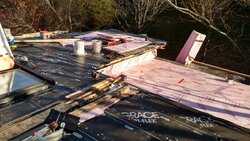The neighbor decided to redo her roof completely. So I went up there and checked it out.
They spent the morning ripping out the old stuff down to the framing. You can see some wood rotted out.
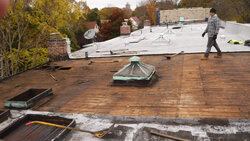
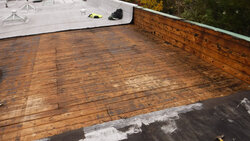
The new skylight and gutters waiting to be installed. Beautiful copper.
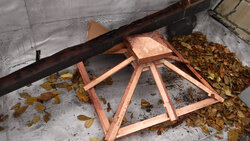
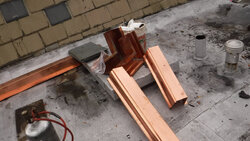
Installed skylight, finished roof.
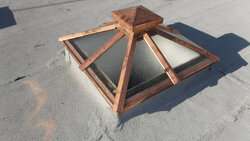
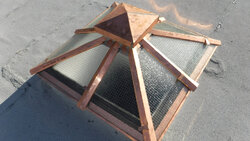
They talked my landlord into repairing the flashing around his skylight and vent pipes. They used fabric and a rubberized flashing cement.
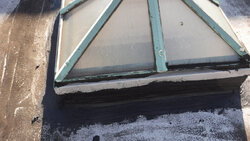
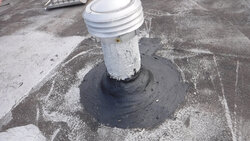
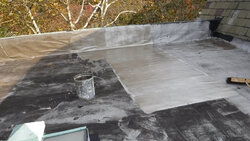
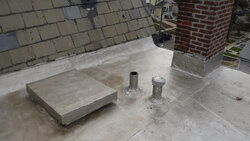
Then they painted everything with an aluminum paint to reflect the sun and make the roof last longer. Does this make sense?
Will it extend the life of this old roof, which is about 20 years old?
I took a picture of the cut up between the neighbor's roof removed and my landlord's roof. It looks like layers of asphalt or something like it, about 1.5 inches thick.
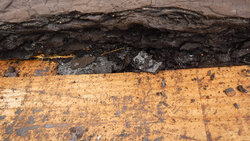
They spent the morning ripping out the old stuff down to the framing. You can see some wood rotted out.


The new skylight and gutters waiting to be installed. Beautiful copper.


Installed skylight, finished roof.


They talked my landlord into repairing the flashing around his skylight and vent pipes. They used fabric and a rubberized flashing cement.




Then they painted everything with an aluminum paint to reflect the sun and make the roof last longer. Does this make sense?
Will it extend the life of this old roof, which is about 20 years old?
I took a picture of the cut up between the neighbor's roof removed and my landlord's roof. It looks like layers of asphalt or something like it, about 1.5 inches thick.




